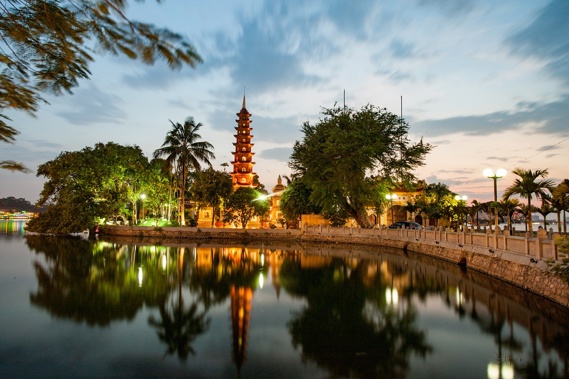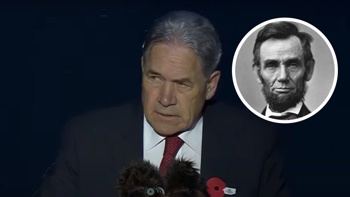
Arriving at Noi Bai Airport in Northern Vietnam, Hanoi’s humid heat greeted me like a hot, wet hug. If a hearty dollop of gritty urban exotica is your idea of holiday joy, Hanoi delivers in spades. It’s unquestionably a city of stark extremes, illustrated by the feverish Old Quarter and the contemporary business districts. Hanoi is a steaming melting pot of culture and creativity, artisanal hubs, heady history, colourful street art and a buzzing food and café scene. In a city of eight million residents and nearly six million motorbikes and scooters, crossing the road feels is a cultural experience, tinged with trepidation. As I gazed in awe at Hanoi’s heaving traffic intersections, there is an enchanting sense of ordered, orchestral symphony to the organised chaos and how it seems to work.

Teaming up with Wendy Wu Tours, who know Vietnam inside out, my trusty local tour guide navigated us confidently across the street. When on-foot, the key is to wait for a gap, be assertive and make eye contact with the incoming riders. Confidence and courtesies seem to go hand in hand in Hanoi. Your first stop should be the whirring web of the Old Quarter, an evocative labyrinth of lanes and skinny streets, which have been a hub of trade and commerce for over a millennium. For bargain-hunters, top drawcards include the streets dedicated to selling puppets, religious and funeral trinkets, artisanal souvenirs and traditional medicine. Amid this rabbit warren, carved up by a mishmash of architectural styles, you can also feast your eyes on some of Southeast Asia’s most fanciful urban art, with some awe-inspiring murals blazing the lanes with colour.
There’s a buzzing cocktail scene in the Old Quarter, with speakeasies buried down alleys and resting above storefronts. Concealed behind a pretend bookshop, Bee’Znees is a Roaring Twenties-style speakeasy. You’ll need to pull the right book to open the bookcase. Hint - try The Great Gatsby. Ne Cocktail Bar was established by the creator of the pho cocktail, which uses the same herbs and spices as Vietnam’s signature dish. Then there’s Leo’s, a swanky cocktail bar with theatrical mixology and a cocktail menu that beats to the seasons.

As a hardcore caffeine fiend, I was particularly excited about delving into some of the Old Quarter’s legendary coffee shops and some ma-and-pa street stalls. Taking time to savour a cup of local coffee surrounded by nattering locals is a signature Hanoi experience. The French introduced café culture to the country, but the Vietnamese have stamped their own mark on it. Vietnam is the world’s second-biggest coffee exporter, beaten only by Brazil. Robusta beans power their coffee production and the Vietnamese enjoy their coffee, around the clock, in a variety of ways. It is most commonly made in a metal filter and allowed to slowly drip into the cup. If you’re wondering how that generous dose of condensed milk entered the equation, the craze originated under French rule when it was very difficult to obtain fresh milk.

I also tried an egg coffee, where egg yolks replace milk. I’m not convinced. Apparently the yolk version was hatched in Hanoi during the war years against the USA, when fresh milk was strictly rationed. In the summer months, coconut coffee, which uses shaved-ice coconut milk is wildly popular. I generally opted for a rich, dark coffee, which certainly packs a bigger punch than your bog-standard long black in New Zealand. I’m sure I was vibing like a wind chime for the rest of the day.
For great atmos, follow the locals to Café Dinh, which entails navigating the skinniest of staircases to reach the second storey venue, which is furnished with little stools and walls lined with the sepia tones of the owner’s family photos. The little balcony overlooking the lake is the cherry on top. If you’ve ever wondered why so many of those French-influenced buildings in Hanoi, in all their faded glory, are so pencil-thin as they rise to six stories – it was a tax avoidance design.

The abundance of street food is a rolling sensory assault as your stroll around Hanoi. A crowd-pleasing go-to is banh mi, Vietnamese baguettes, which brim with all many of flavour-loaded concoctions. How could you possibly go wrong with Hanoi’s deliciously hot and crispy bread? The baguette used in a banh mi is typically lighter and crispier than a traditional French loaf or baguette. The secret? The bread is made from rice flour, which gives it a slightly sweet flavour and a crispy exterior. One of the hottest haunts in town is Banh Mi 25, where hundreds of people flock to around lunch time for their fill. It’s like the Fergburger of Hanoi. Tuck into a sublime beef banh mi, loaded with pickled veges, fresh herbs and spices. Costing just NZ$2, it’s an absolute steal.

Street food in Hanoi is headlined by the three Bs. Banh mi, pho bo (traditional Vietnamese noodle soup with beef) and bun cha (barbecued pork with rice vermicelli.) Beyond the three Bs, the capital’s food scene is as diverse as it is adventurous, whether are brave or faint of stomach. Without thinking about it too much, I submitted to a bowl of bun oc, sea snail noodle soup, Hanoi’s classic comfort food. A big crowd pleaser is banh tom, Hanoi shrimp cakes. Banh tom is made from battered sweet potato and prawns, served with a side of fish sauce and papaya that is sweet and slightly spicy. Delicious!

As the afternoon heat hit fever pitch, I strolled under the verdant canopy of those French-influenced tree-lined boulevards to the Ho Chi Minh mausoleum, to hear about the man who led Vietnam’s campaign for independence from French colonial rule. After dedicating his life to the liberation of his country from foreign rule, Ho Chi Minh died in 1969 and his body was preserved for posterity. This sacred place was specifically built so that after Uncle Ho passed away, Vietnamese from the North and South could find contentment in seeing their leader, in a united Vietnam. Every year the mausoleum is closed for two months and Uncle Ho jets off to Moscow to be is given a bit of a spruce up! Protected by a military honour guard, his embalmed body lies in a glass case with dim lights in the central hall of the mausoleum.

A short stroll through the grounds brings you to another signature Hanoi attraction, One Pillar Pagoda. The pagoda was first built over a thousand years ago, resembling a lotus blossoming from the pond. It’s a striking sight, however after being severely damaged in the struggle for independence from the French, the original pagoda was later rebuilt in 1955, under the orders of Uncle Ho. I also visited the 11th century relic, the Temple of Literature, which was built in homage to the Chinese scholar Confucius. Now considered Vietnam’s first national university, it was enchanting to watch schoolkids lined up for graduation photos within the temple grounds, which is a cherished national pastime, to celebrate the end of the school year.
The altars are also popular with students praying for good grades. Graced with five courtyards, serene ponds, manicured gardens and glorious architecture, it’s a visual feast of red columns, ornate wooden pavilions and antique-style lanterns. Fill your Insta! Another photogenic encounter to add to the check-list is one of central Hanoi’s blissful lakes, like Truc Bach Lake, adjacent to the Old Quarter. Flanked by flame trees, bamboo and willow, this picturesque lake oozes instant urban respite, as you stroll the pathways and admire Hanoi’s oldest pagoda, the swathe of temples and ornamental bridges straddling the waterways. John McCain was famously photographed being dragged, and subsequently captured, from Truc Bach Lake in 1967, before being incarcerated in the notorious Hanoi Hilton.
Another heart-stealer is Hoan Kiem Lake, lined with reed and flower beds, and home to a Confucian temple that’s reached by crossing a gorgeous red wooden bridge. Wendy Wu Tours offers a wealth of touring options in Vietnam, whether you’re looking for an extensive multi-day journey or private day-trip, threading together all of the essential sights with flexibility for personal exploration. The on-the-
ground local expertise was exceptional. You’ll love the passion, informality and knowledgeable insights of your guides. Book a touring option that best suits your desires. www.wendywutours.co.nz
I jetted my way to Hanoi with Malaysia Airlines, who offer super-convenient, one-stop services from Auckland via Kuala Lumpur, eight times a week. With well-timed overnight flights, I slept my way across Australia’s wide girth, to and from KL. The award-winning, national carrier Malaysia Airlines is a full-service airline, renowned for competitive airfares, exceptional service and quintessential Malaysian hospitality. The in-flight entertainment offerings and meal services are impressive, across all classes. As a oneworld alliance partner, enjoy enhanced connectivity to more than 900 destinations. You can also purchase access to the airline’s expansive Golden Lounge at KL. Bag some great fares and seats to suit with the Malaysia Airlines Explore the World Sale. www.malaysiaairlines.com
Mike Yardley is our resident traveller on Jack Tame Saturday Mornings.
Take your Radio, Podcasts and Music with you









